Mounting the heating cable inside the pipe: installation instructions + selection tips
Do you want to protect the water supply system in cold weather from freezing by installing the heating cable inside the pipe? Agree that to prevent the problem is much cheaper and easier than to eliminate the dire consequences. You decided to do all the work yourself, but do not know where to start?
We will help you deal with cable installation. The article provides a detailed briefing of this process, accompanied by step-by-step photos. The nuances of the preparation of materials for work, the features of the placement of the system inside the pipeline are analyzed.
Themed videos containing expert recommendations on the proper preparation and connection of a heating system at home were selected. There are also tips to help you choose the best cable.
The content of the article:
Varieties of cables for heating pipes
A properly selected heating system is the key to long-term protection against freezing of any type of pipeline. Therefore, before dwelling on a specific product, let's take a closer look at the assortment offered by the market.
The cable products available on the market are divided into 2 types, depending on the type of installation - intended for placement outside and inside the pipe.
Let us consider in more detail the second option, which in turn is divided into 2 types, depending on the purpose of the pipeline:
- for food purposes;
- for domestic needs and other tasks.
In the first case, the cable has a protective coating of food-grade polymer that does not affect the composition and quality of water, for example, polyolefin, fluoropolymer.
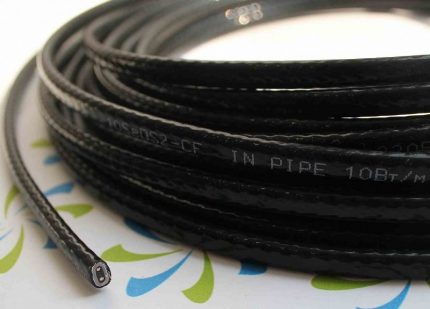
In the second case, there are no strict requirements for the type of coating, but such a system cannot be used to heat the food pipeline. Another difference between cables is the principle of operation.
All options offered to the user heating cable are divided into two main groups:
- resistive;
- self-regulating.
In the first case, we are talking about one or two-core product. The manufacturer, as a rule, immediately releases a ready-made system for installation, which has a certain length. The cable is often equipped with a plug for connecting to the network. In the resistive system, a temperature regulator and a temperature sensor are additionally included.
And in the case of a self-regulating product, additional sensors and regulators are not needed. In it, a semiconductor matrix is responsible for the heating level, capable of turning the system on and off automatically when certain temperature indicators are reached.
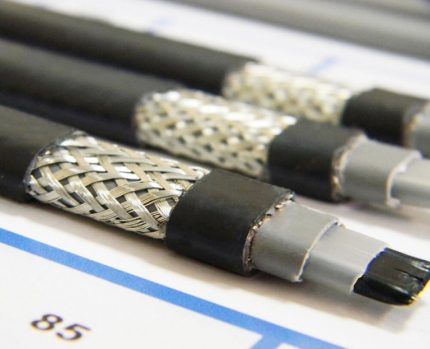
What to look for when choosing a cable?
Before buying, you should immediately decide who will perform the installation work. If plans self installation, then it is better to stop at a simpler option. Let us consider in more detail what criteria are important when choosing.
Criterion # 1 - pipeline assignment
If you want to heat a pipe that supplies drinking water to your home, you should buy a cable in a food jacket. All manufacturers and stores must indicate this characteristic in the accompanying documents. Cable sheath requirements for systems transporting wastewater and process water are not so stringent.
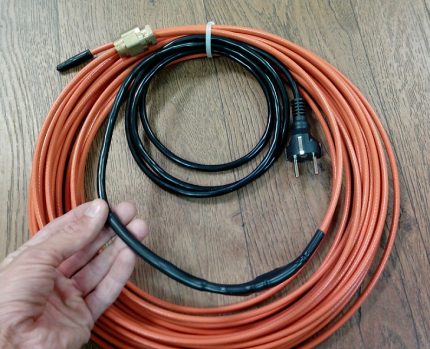
Do not be surprised, but a product in a safe shell for drinking water will cost more.
Criterion # 2 - cable type and system length
Before buying, you need to determine the length of the site that needs heating. The length of the cable will depend on this.
Immediately decide what type heating cable you prefer - resistive or self-regulating. The first option is cheaper. But its service life is shorter, and installation is more difficult, especially for a beginner in this matter.
Another significant difference of the resistive wire is that you can buy a heating product of only a certain length - the manufacturer has prepared various options. Therefore, you will have to choose from the available availability. Moreover, the resistive system is most often equipped with a plug for connecting to the mains.
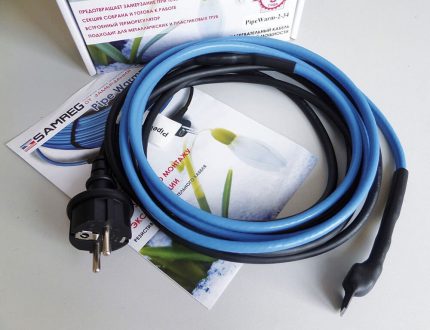
The second option is more expensive, but easier to install. Self-adjusting cable sold in the bay, if the buyer cuts off a certain length, or there are ready-made versions of the heating system, equipped with a power cable.
Regardless of the option chosen, you should be extremely careful - do not hesitate to require supporting documents from the manufacturer, warranty card and certificate of product quality.
Criterion # 3 - Preferred Product Power
In order for the installed cable to heat the communications, you need to choose the right power. This characteristic is also indicated by the manufacturer.
For water systems use pipes with a diameter of up to 32 mm, for which it is recommended to use heating systems for 9-16 watts. Moreover, this is the power of one running meter. To calculate the total value, you need to multiply the specified parameter by the entire cable length.
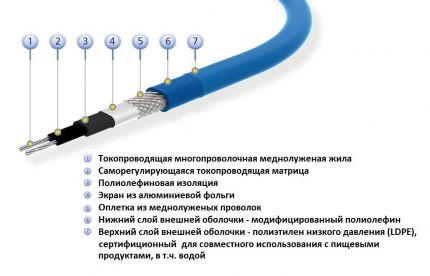
Moreover, experts do not recommend buying a resistive type of product in order to save money, considering the latter to be less reliable for installation inside the pipeline.
Criterion # 4 - the cost of the heating system
As for the cost, this criterion is also important: you cannot buy too cheap a cable. The rule “good cannot be cheap” in the choice of cable fully confirms itself.
If the price is very low for the cable system you like and there are documents from the manufacturer, you must pay attention to the expiration date - an unscrupulous seller may offer an expired product, or it expires in 6-12 months.
It is better to refuse such a “profitable” offer - at the end of the warranty the cable may cease to fulfill its functions and it will have to be replaced, which may result in repeated costs.
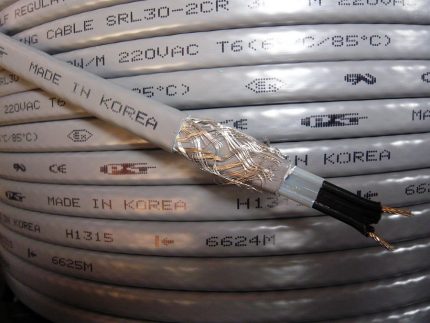
Also, when choosing a cable for internal heating, it is better to give preference to well-known manufacturers:
- German - Eltherm Gmbh (Germany);
- American - Raychem and Heat Trace Products, LLC;
- Korean - Caleo
- French - Eltrace
- Danish - Devi;
- Finnish - Ensto.
There are many Japanese-made products on the market for water supply heating. Here you should also be careful not to buy a cheap Chinese fake. In addition to the wires and seals, you need to choose high-quality.
Pay attention to the cross-sectional shape inside the sealing gum - it can be round and rectangular / square for different cable cross-sections. It is very important to buy reliable coupling elements - their price should be no less than 5 m of cable. In the matter of heating the pipe, do not save excessively.
Steps for installing a heating system
Consider the arrangement of a system for heating the pipeline from the inside using the example of water supply. For such a pipe, it is best to take a self-regulating wire in a food sheath.
Stage # 1 - buying the right materials
When buying a cable, we immediately determine the right footage, which is equal to the length of the pipe that needs heating. Together with the cable, it is better to purchase the consumables necessary for installation: a set of couplings, an oil seal and a section of wire with a euro plug.
In addition, a tee can be useful if it is not standing in the intended installation location, and RCD at 10 mA. A tee is needed to correctly enter the cable.The latter must not be allowed through a pipe passing through a bend at a right angle. Therefore, in the place of the proposed entrance, it is better to first install a tee and then enter through it.
A self-regulating cable requires power to operate. Therefore, a separate line is highlighted for him. And, despite the presence of double insulation on the heating wire, it is necessary to connect to the wiring diagram enable RCD and circuit breakerprotecting this line in case of accidental damage to the shell.
Stage # 2 - preparing the cable for installation
It must be remembered that self-regulating cable systems die not only from frequent turning on and off the cable. No less evil - improper splicing with the power cable and poor-quality termination, which is fraught with a short circuit.
It is necessary to properly isolate using good consumables. There are bad couplings when the manufacturer has not enough glue. Still, the reason lies in the hands of the master, especially if he connected everything without experience and incorrectly.
To prepare the heating wire for entry into the pipeline, you need:
- perform termination;
- put on the cable kit;
- splicing the supply wire with a plug with a self-adjusting length.
Let us consider in more detail how to properly isolate the end of the wire.
If each step of the termination is completed carefully, then tightness of this unit will be ensured. True, subject to the use of a reliable adhesive set of couplings from a trusted manufacturer.
Now it is necessary to carry out the splicing of the power cable with the heating one, in order to provide the latter with the power supply that he needs to work.
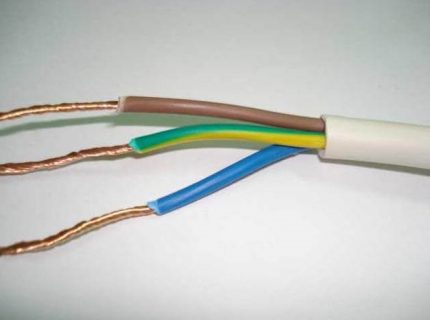
But at this stage it will be more convenient to put on an oil seal or it is also called penetration or a passage kit. Each part should be worn clearly following the instructions supplied by the manufacturer.
Having put the penetration on the wire, you can proceed to splicing with the power cable. If you purchased a ready-made kit in which a piece of cable with a plug at the end is already connected, then you do not need this step.
After waiting for the cooling of the heat-shrink sleeves supplied to isolate the joint, you can proceed to the next step.
Stage # 3 - placing the system inside the pipe
When the preparation of the heating system is completed, you can enter into the pipeline.
To do this, you must adhere to these rules:
- start the cable only through the tee;
- avoid areas with right and sharp corners;
- Do not jerk sharply and do not use force.
Entry begins by pushing the insulated end through the tee into the water pipe. Having pushed the entire length of the heating cable into the pipe, it is necessary to ensure tightness at the entry point.

At this stage of the cable installation, penetration is useful to ensure the tightness of the system. It is necessary to carefully tighten all the fasteners by wrapping the clamping sleeve first with your hands, and then tightening the connection with a wrench.
The rubber seal inside the gland is flattened, thereby ensuring tightness.
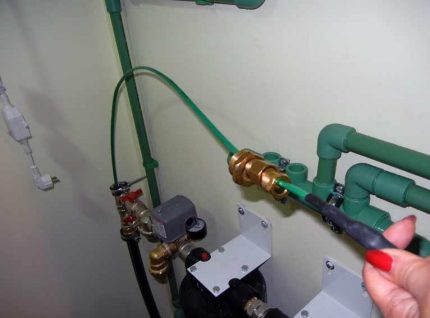
Before placing the heating system, you need to make sure that the cable will not pass through the stop valves, which is strictly forbidden to do.
Stage # 4 - connection to the power supply system
After completing installation work, it remains to connect to the mains. To do this, it is advisable to use a separate line.
Here it will not be amiss to take care of safety and equip this line of RCDs with 10 mA.Such a solution will protect against current leakage if a wire accident occurs. RCD simply de-energizes the line, preventing the defeat of the owner of the house and all family members.
The connection process is extremely simple - you need to turn on the euro plug located at the end of the power cable, which we connected to the heating cable, into a power outlet. Moreover, it is not necessary to turn off the temperature and periodically turn off the heating system - thanks to the self-regulating matrix, this process will take place automatically.
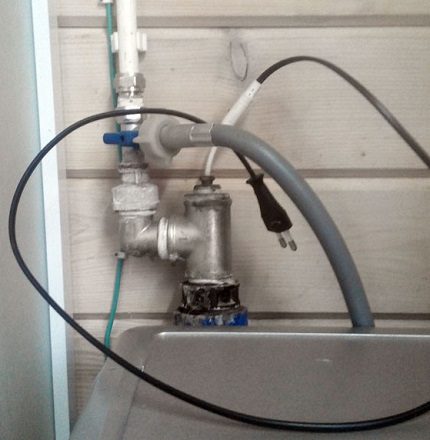
This completes the connection. But for the system to last a long time, it should be properly operated. It is extremely undesirable to disconnect the cable from the outlet without the need - these actions will significantly shorten her "life". The self-regulating matrix will fail, not having time to work out the set time.
In order to save, it is better to provide additional heating for the pipeline, especially if the pipe section extends along the surface. Its optional insulate the outsideputting on a special casing of heat-insulating material.
There are a lot of insulation options for pipes outside - here you can choose the most preferred one for yourself. Yes, and installation can be done on their own. With a self-regulating wire power of 10, 16, 24 W per linear meter, the heating cable thread from the GWS line can have a length of up to 100 m.
But in practice, they often use a system up to 20 m long. What manufacturers have noticed, offering ready-made systems for heating, both from a resistive cable and from a cable with a self-regulating matrix, 5, 10, 20 m long.
Conclusions and useful video on the topic
Detailed installation of the heating cable system inside the pipeline is discussed in the following video:
Features of various types of cables from manufacturers and recommendations for future buyers:
Information about the end insulation and detailed instruction on splicing with the supply wire in the following clip:
When choosing good materials and observing the installation technology, you can independently install it inside the pipe and connect the heating cable. It is important at the same time to carefully perform each step, reliably connect the cores and ensure tightness.
And the above expert advice and video instructions will help to understand in detail the installation process for home craftsmen who do not have experience in performing such work. If you doubt your own abilities, then it is easier to turn to an experienced master, who is praised and recommended by friends and other grateful clients.
Please write comments in the block below, ask questions, post a photo on the topic of the article. Tell us about how you installed the heating cable yourself or your friends equipped their pipeline. It is possible that your information will be useful to visitors to the site.

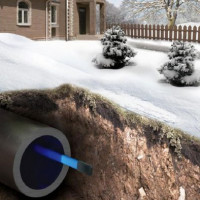 Cable for heating a water pipe: marking, types, manufacturers + selection features
Cable for heating a water pipe: marking, types, manufacturers + selection features 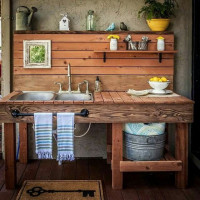 TOP-10 washbasins for summer cottages: main characteristics + selection recommendations
TOP-10 washbasins for summer cottages: main characteristics + selection recommendations 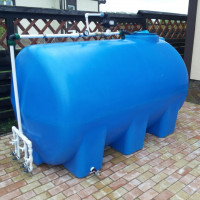 Plastic containers for water: types, advantages and disadvantages + recommendations for selection
Plastic containers for water: types, advantages and disadvantages + recommendations for selection 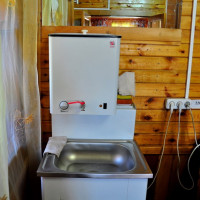 Cottage washbasin with heated water: ranking of the best models + tips for potential buyers
Cottage washbasin with heated water: ranking of the best models + tips for potential buyers 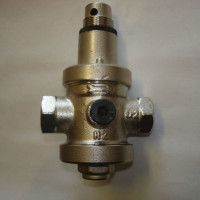 Water pressure reducer in the water supply system: purpose, device, regulation rules
Water pressure reducer in the water supply system: purpose, device, regulation rules 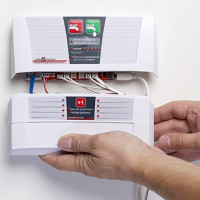 Overview of protection against water leaks “Aquastorozh”: device, advantages and disadvantages, installation rules
Overview of protection against water leaks “Aquastorozh”: device, advantages and disadvantages, installation rules  How much does it cost to connect gas to a private house: the price of organizing gas supply
How much does it cost to connect gas to a private house: the price of organizing gas supply  The best washing machines with dryer: model rating and customer tips
The best washing machines with dryer: model rating and customer tips  What is the color temperature of light and the nuances of choosing the temperature of the lamps to suit your needs
What is the color temperature of light and the nuances of choosing the temperature of the lamps to suit your needs  Replacement of a geyser in an apartment: replacement paperwork + basic norms and requirements
Replacement of a geyser in an apartment: replacement paperwork + basic norms and requirements
They wintered for a year with cable in Siberia - the flight is normal. The water was first brought in as a summer cottage (for the summer season), the depth is 70 cm. Then they decided to stay at the dacha and began to "refine" everything. An internal cable is a great solution.
I just didn’t understand what was happening with the matrix, and how does the life of the wire depend on it? Is the number of on-offs limited? Last year, it was included from December to April. In this I wanted to start saving and turn it on for the night only, during the day a lot of water is pouring - it will not freeze. Apparently, you can’t do this?
Faced with freezing water supply more than once. It’s always a problem to locate an ice cork. Then for a long time you need to heat the pipe with a hairdryer. Therefore, the thought of a heating cable comes up every time. Plug in and the problem is solved. But in my opinion, such a system is needed precisely as an emergency. To warm water constantly is somehow not economical. At what temperature does the self-regulating cable work? And when does it turn off?
Good afternoon. The self-regulating cable does not have a trip temperature. Standard temperature of a heating domestic cable is 65ºС. In principle, at sub-zero temperatures, it always tends to this value. At a temperature of -30º, its power is almost doubled per meter. And at + 10º and above, the power begins to decrease. Almost the same at + 30º: the power per meter drops almost twice. But the cable always works.
Therefore, if you want to save money, you should always include the installation of a temperature controller that starts the cable at certain temperatures (usually + 2 / + 5º) and turns it off when the desired parameters are reached, for example + 15º.
It is unprofitable in winter to sit or change the piping at home without water due to the fact that it simply burst from icing. So after such not bright prospects, the constant operation of the heating cable will not seem such an overhead.
The heating cable does not have a trip or shutdown temperature, since it works constantly in the same temperature mode. Of course, with decreasing ambient temperature, power consumption will increase and vice versa.
When you turn on or off the heating cable, depending on weather conditions, you decide for yourself. But it is better to do this as little as possible, continuous operation is easier than frequent on and off modes.
Thanks, understand)